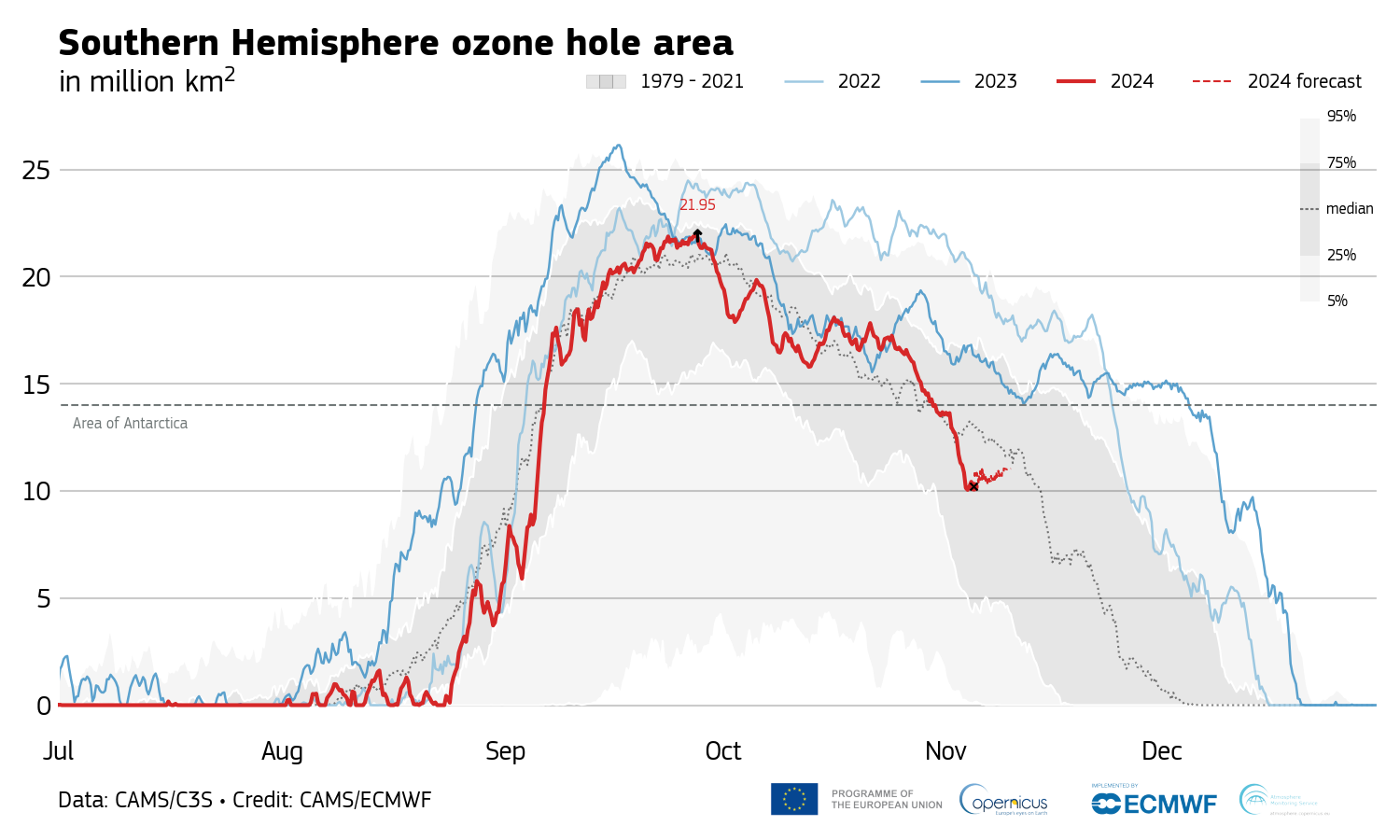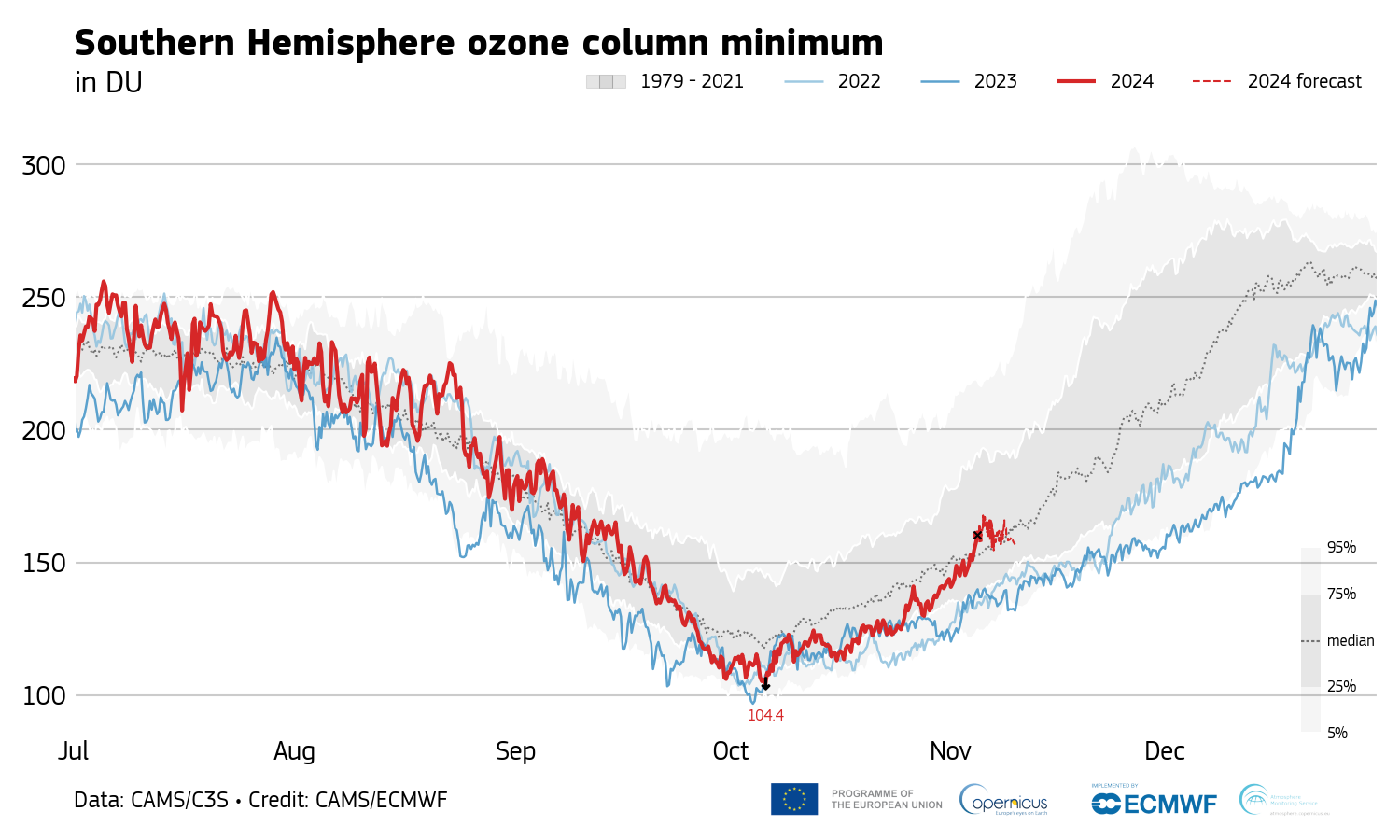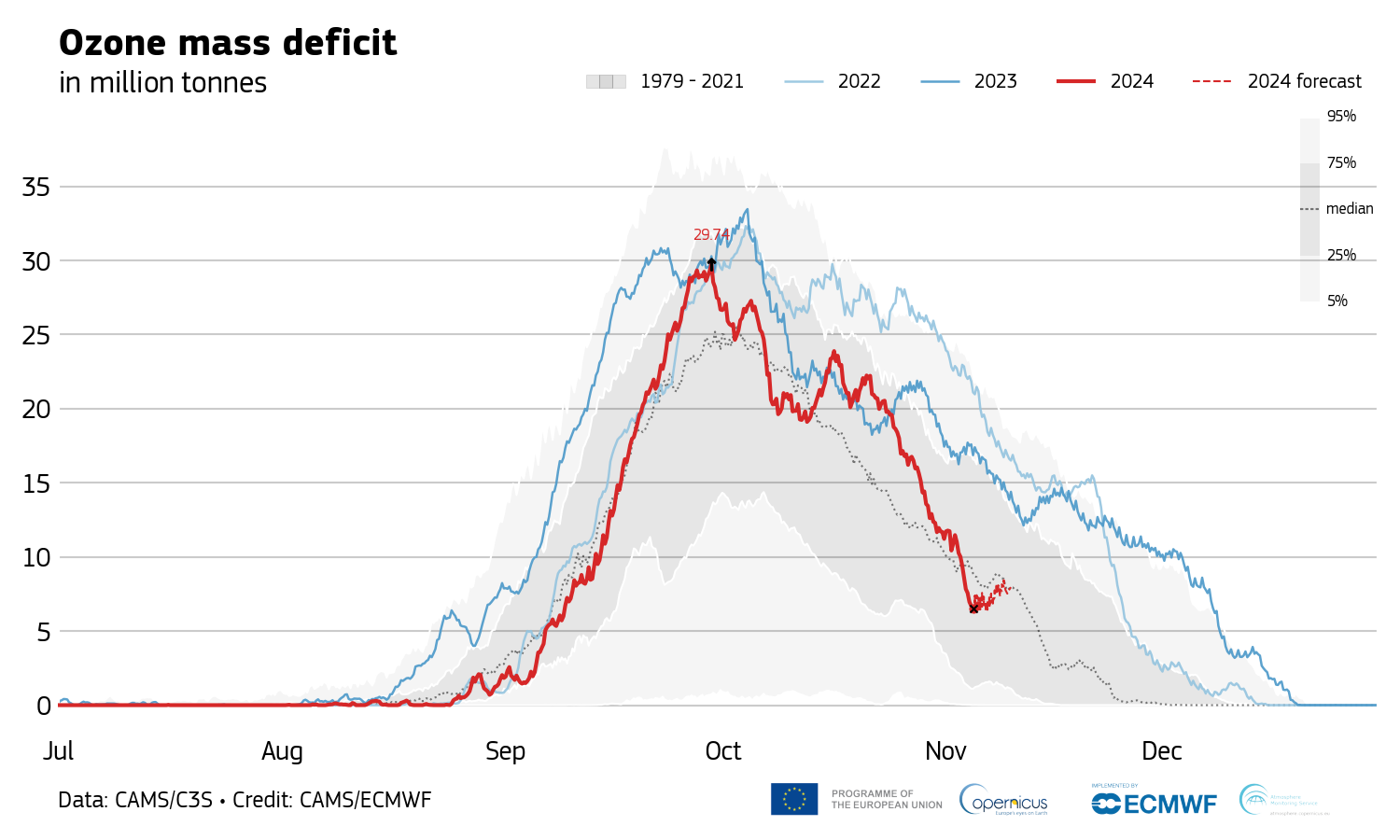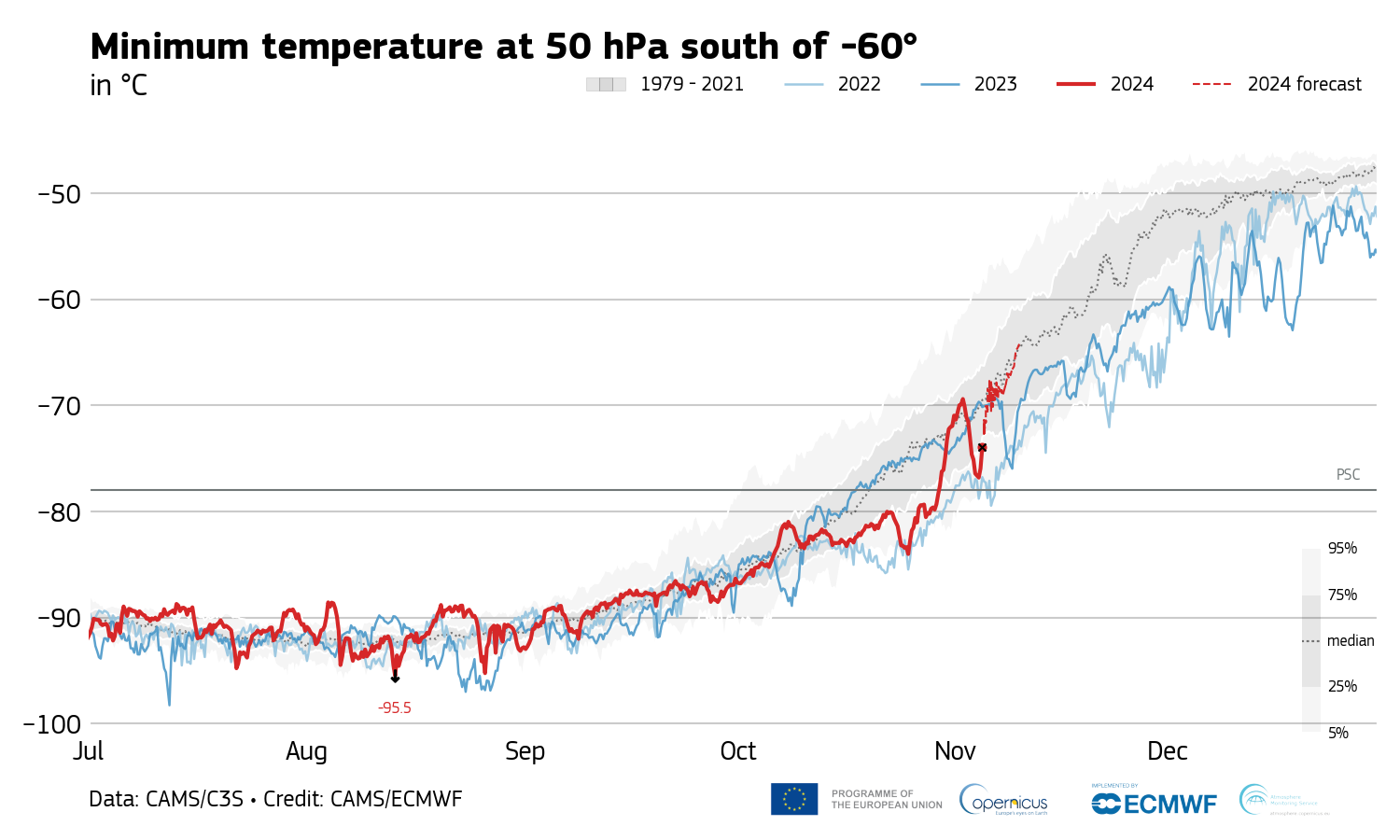The reduction of ozone concentrations in the stratosphere and the formation of the ozone hole each year are caused by complex meteorological and chemical processes. The status of the currently ongoing ozone hole is displayed as a 3D rendered animation (animation to the right). To put this in perspective and allow for comparisons, the videos in the second and third rows show the entire process of formation and destruction of the 2017, 2018, 2019, 2020, 2021, 2022 and 2023 ozone hole. Finally, the educational video first on the left will guide you through the basics of the ozone hole and why it is important to keep monitoring the ozone layer. Below the videos you will find graphics, updated daily, showing the extent of the Antarctic ozone hole this year.
|
|
|
| The ozone hole, the ozone layer, and their monitoring | 3D rendering of the ozone hole evolution in 2024 |
Ozone hole area

During the Southern Hemisphere spring season (August - October) the ozone hole over the Antarctic increases in size, reaching a maximum between mid-September and mid-October. When temperatures high up in the atmosphere (stratosphere) start to rise in late Southern Hemisphere spring, ozone depletion slows, the polar vortex weakens and finally breaks down, and by the end of December ozone levels have returned to normal. Since the ban on halocarbons, the ozone layer has slowly been recovering; the data clearly show a trend in decreasing area of the ozone hole. The ozone hole area is calculated as the area with ozone values below 220 DU south of 60S.
Ozone column minimum

Ozone values are often measured as the number of ozone molecules in a vertical column and denoted in Dobson Units (DU). During the Antarctic ozone hole period, values can be less than half the normal levels. CAMS monitors the minimum value within the ozone hole area over time as another measure of the significance of each year's event. By comparing the current state of the ozone hole with its long-term evolution, it is possible to get an indication of whether the ozone layer is being restored and how fast this process is occurring, bearing in mind that meteorological and dynamical interannual variability also impact the size and duration of the current ozone hole.
Ozone mass deficit

The ozone mass deficit combines the effects of changes in ozone hole area and depth. It is the ozone mass that would have to be added to the atmosphere to increase the ozone columns over the Antarctic ozone hole area to 220 DU.
Minimum 50 hPa temperature

Ozone depletion is directly related to the temperature in the stratosphere. This is because polar stratospheric clouds, which have an important role in the chemical destruction of ozone, only form at temperatures below -78°C. These polar stratospheric clouds contain ice crystals that can turn non-reactive compounds into reactive ones, which can then rapidly destroy ozone as soon as light from the sun becomes available to start the chemical reactions. This dependency on polar stratospheric clouds and solar radiation is the main reason the ozone hole is only seen in late winter/early spring.
Vertical cross-section
 The vertical cross section looks at the amount of ozone (in units of millipascal - mPa) in the entire atmosphere, from the equator all the way to the South Pole and back to the equator along one meridian line, describing a semi-circle as shown in the figure on the right. By plotting the data in this way, it is possible to visualise the vertical extent of ozone in the atmosphere from sea level, up to and including the stratosphere.
The vertical cross section looks at the amount of ozone (in units of millipascal - mPa) in the entire atmosphere, from the equator all the way to the South Pole and back to the equator along one meridian line, describing a semi-circle as shown in the figure on the right. By plotting the data in this way, it is possible to visualise the vertical extent of ozone in the atmosphere from sea level, up to and including the stratosphere.
In the animation the Antarctic is located in the middle (at 90°S) and the equator is located on either end (at 8°W and 172°E). During the Southern Hemisphere spring, ozone depletion can clearly be seen in the stratosphere.
Ozone forecast charts
The ozone forecast charts are produced on a daily basis and show predictions for total vertical ozone column values (in Dobson Units, DU) for the Antarctic region up to five days ahead.
This map is centred on the Antarctic region. Areas coloured yellow, orange and red depict high ozone values, whereas green and blue areas show low values. The solid black line is the 220 DU contour, which is commonly used to define the area of the ozone hole.
